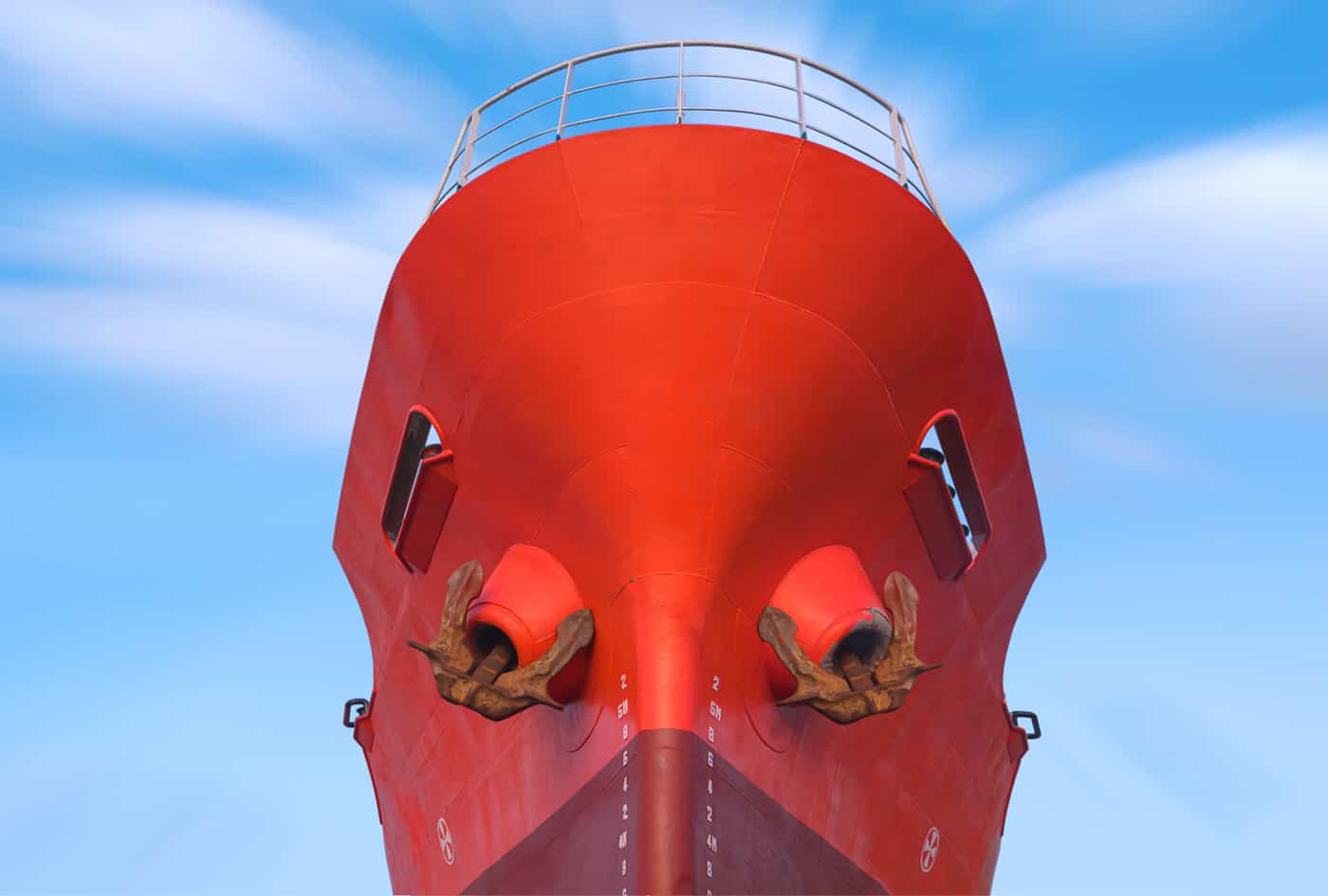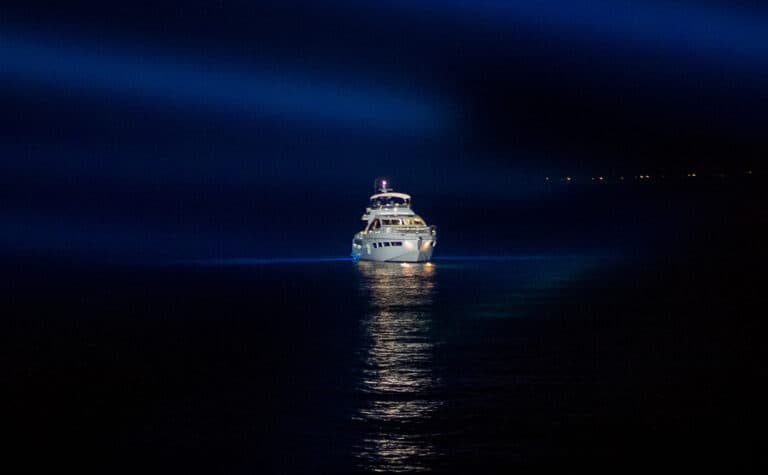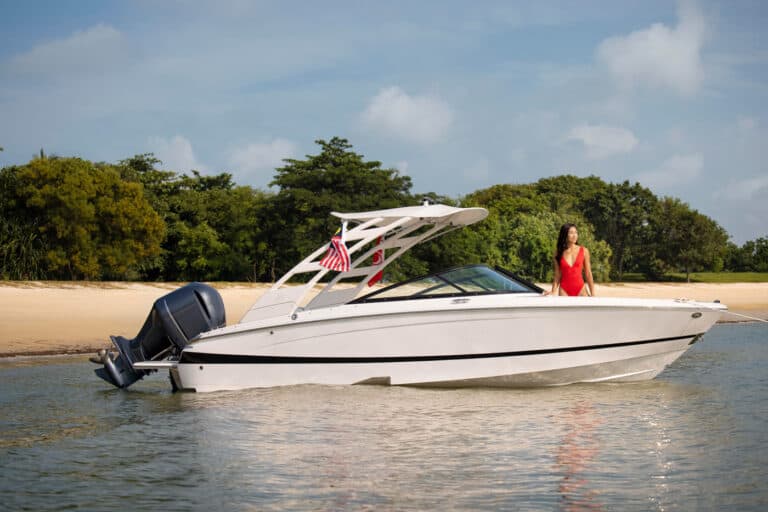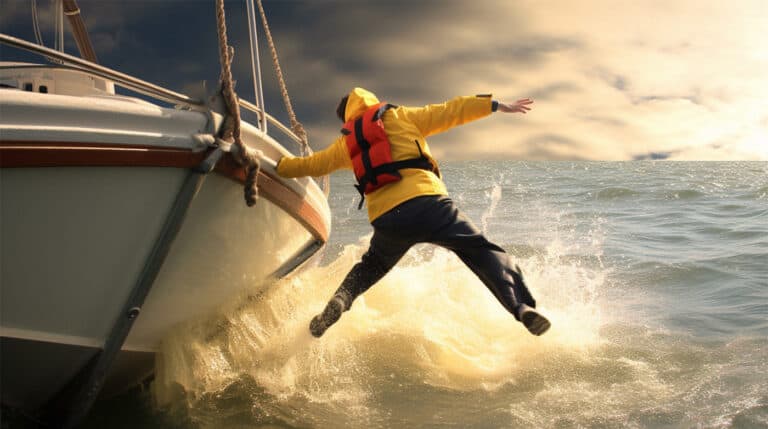Hulls, literally the body of any boat or ship.
Every boat has a hull, it is the watertight body of a ship or a boat, the hull may open at the top like in a dinghy, it may be fully or partially covered with a deck, you may have a deck house, a funnel, derrick, or mast, it depends on the type of boat.
What is important is that the hull is the body of the boat and is what keeps you afloat.
The line in which the hull meets the water surface is known as the waterline, this is different on every boat, not only because every boat is different but because there are several types of hull.
Sailboats and large cruisers are two types of boats that share the same type of hull.
Despite how different these two types of boats actually are, they have the same shape hull, and it can leave you wondering why this is, we will answer this question for you.
Join us today as we tell you what hull sailboats are large cruisers tend to have, as well as why, how useful this hull type is, and finally what are the other types of hull that exist.
Boat Hulls
Boats all come in various shapes and sizes, as do their hulls.
In spite of this variety every hull is designed to do one of only two things, they either displace water, or ride on top of it, this is known as planing.
A sailboat, slow-moving vessel, and large boats such as cruise ships will often have displacement hulls.
A combination of their weight and their power means that they move lower in the water and therefore push, or displace the water rather than riding on top of it, skimming it like an elegant bird.
A smaller and faster boat is like an elegant bird.
Things such as powerboats, personal watercraft, and so on, typically have planing hulls.
These are made to rise up and ride on top of the water at high speeds.
Overall there are 4 different types of hull; flat-bottomed hulls, rounded-bottom hulls (displacement hulls), V-shaped hulls (planing-hull), or a multi-hull (think of pontoon boats).
Sail Boats
So, considering that a sailboat has a displacement hull, we know that it is a fairly slow moving vessel.
This is true.
Sail boats are propelled partly, or completely by sails, and they are usually smaller than sailing ships.
The difference between a sailing boat and a ship varies by region and the boating cultures.
Not all sailboats (see how fast they go) have the same hull types, these boats typically have a singular hull, although there are some that are not mono-hulled, and these are becoming more popular.
However, the majority of sail boats are mono-hulled, and those that are have a displacement hull.
Due to them being slow moving and usually propelled solely by their sails, and therefore the wind, this means they move slowly and cannot skim on top of the water, but instead displace it as the wind powered sails draws them through it.
Large Cruisers
Generally large cruisers are also battle cruisers, but let’s just define them as long, large ships.
Cruisers are considered to be a type of war ship used in the wars, however we do still use these types of ships today.
Large cruiser was a short-lived term that was applied only to the ship-ship Alaska class in 1940.
Only one of these was launched but never finished.
Nonetheless, large cruiser ships also have displacement hulls.
It’s not rocket science to assume that these ships move slow, they won’t be skimming the water like a jet ski.
This means that they won’t be riding on top of the water, but instead they will displace it.
You can expect this from any large and slow moving ship. Speed ability has a lot of influence on hull shape.
Displacement Hulls
A displacement hull will typically have a rounded bottom with a tear-drop styled shape running from bow to stern.
These hulls displace, or move the amount of water that is equal to the weight of the boat.
These types of hulls are very useful, many long range cruising boats, such as trawlers and most sailboats will have a displacement hull.
Due to their design displacement hulls are restricted in speed to the square footage of the waterline length times by 1.34.
So you can imagine that a 64ft boat would really only expect to hit a top speed of just over 10 knots.
Displacement Hulls for Offshore Cruising
In the early days of cruising, heavy displacement hull forms were really the only option for long distance cruising.
This was simply due to light materials for hulls, rigging and so on were not available.
Now though, there are more options, and you can see ultra light hull forms crossing the oceans.
However, there is an ease in heavy displacement, many will seek the extra days at sea for the increased comfort in rough seas that a heavy displacement hull provides.
Types of Hull
Displacement hulls are not the only hull type as we know, there are many other options too.
Each had its benefits and uses for specific types of boating.
- There are also Flat-Bottomed Hulls. Boats that have this are very stable and best suited for fishing on calm and small bodies of water. These are not sea-faring hulls, but are better suited to lake fishing.
- Rounded-bottom Hulls are also known as displacement hulls. These are designed to effortlessly move smoothly through waters, if you are unsure what one looks like, look at a canoe. The drawback to this is that it is less stable in waters, so it may be more prone to capsizing, especially on smaller vessels.
- V-shaped hulls, or planing hulls are the most common for powerboats. They plane on top of the water at high speeds and provide a smooth ride through choppy waters.
- Multi-hulled boats are also an option. They can be planing or displacement, but due to having multiple hulls they are the most stable of the water but also need more room to steer and turn. An example of this is a pontoon boat.




